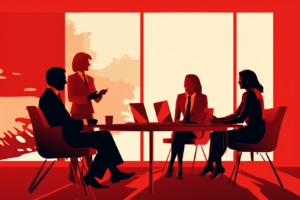How the world has adapted to hybrid working post-Covid
- 4 Min Read
In a post-Covid world, employees are eager to engage in hybrid working models, we discuss how organisations are adjusting to this change.
- Author: Andrew Speer
- Date published: Jun 30, 2023
- Categories

Whilst remote working has existed for centuries and has certainly been on the radar for many, there is no question that the Covid pandemic has accelerated people working from home and its development.
Statistics from Intuition.com show that around 30% of Americans worked remotely before 2020, but now this number has increased to 48%, with around 62% of people adopting a hybrid model of both working at home in 2023.
We listen to the experiences of aspiring startup founders who have adjusted to the concept of hybrid working, which involves a combination of remote and office work, following the Covid-19 pandemic.
Hybrid working suits a lot of people
A hybrid model assumes that employees will split their days of the week between working from home and working in the office.
“Hybrid working might consist of staff working at home for 3 days per week and 2 days in the office – and this gives a lot of people the best of both worlds,” explains Dan Kettle, founder of finance startup, Pheabs.
“Some staff members value being able to work from home, especially if they have small kids, because it means that the extra hour in the morning or evening is spent with their families, rather than on the train or car.”
“But they also value being in a busy and sociable environment, which creates a good work life balance.”
People are more productive working remotely
Further reports from Intuition.com show that 83% of staff say that they are more productive when working from home.
“The initial feeling and sentiment towards working from home was that it was too distracting or that people wouldn’t work properly,” explains Richard Allan of funding platform, Capital Bean.
“People would typically say that they might be distracted by Netflix or being around other family members.”
“But after Covid and all the multiple lockdowns, the novelty of remote working has worn off and people are now accustomed to grabbing their laptop and buckling down to work, whether it is a spare room, the kitchen or dining room table. Some homes have reconfigured their homes to include an office space too.”
“People feel refreshed from not having commuted and are ready to get things done, without losing precious time with office chit chat or internal politics.”
Richard Dent of professional finance services company, Finger Finance, agrees: “You have more and more people now opting to work remotely, but they can still get the benefits of working in an office and therefore having a hybrid work scenario.”
“For employers, they can save money by having smaller office spaces and they can arrange for staff to be in on certain days for presentations, team meetings or for collaborative purposes.”
“Staff can have the benefits of remote working, but also get the fire in the belly that comes with working in a heated office environment.”
Hybrid working is not for everyone
“As a company, we are very forward thinking when it comes to motivating and incentivizing staff,” explains Mark Gomer of price comparison site, Proper Finance.
“But our company thrives by having everyone work in the office. Being an organisation of more than 50 people, we have a very personable and friendly culture, and it is important the employees feel this culture and it transcends into every aspect of the business, including how they treat customers and suppliers.”
“In addition, there is evidence that a lot of employees grow individually when in an office environment, being able to learn from each other and how they can start to manage and take on more responsibilities, which they may not achieve working from home.”
Conclusion
The post-Covid era has witnessed a remarkable transformation in the way the world works, with the widespread adoption of hybrid working. As organizations navigate through the challenges and opportunities presented by this new work model, it has become evident that hybrid working offers flexibility, improved work-life balance, and increased productivity.
While some adjustments are still necessary, the resilience and adaptability demonstrated by individuals and businesses alike have paved the way for a future where hybrid working is the norm rather than the exception. With careful planning and continued innovation, the world has embraced this new way of work, creating a more agile and interconnected professional landscape.’








